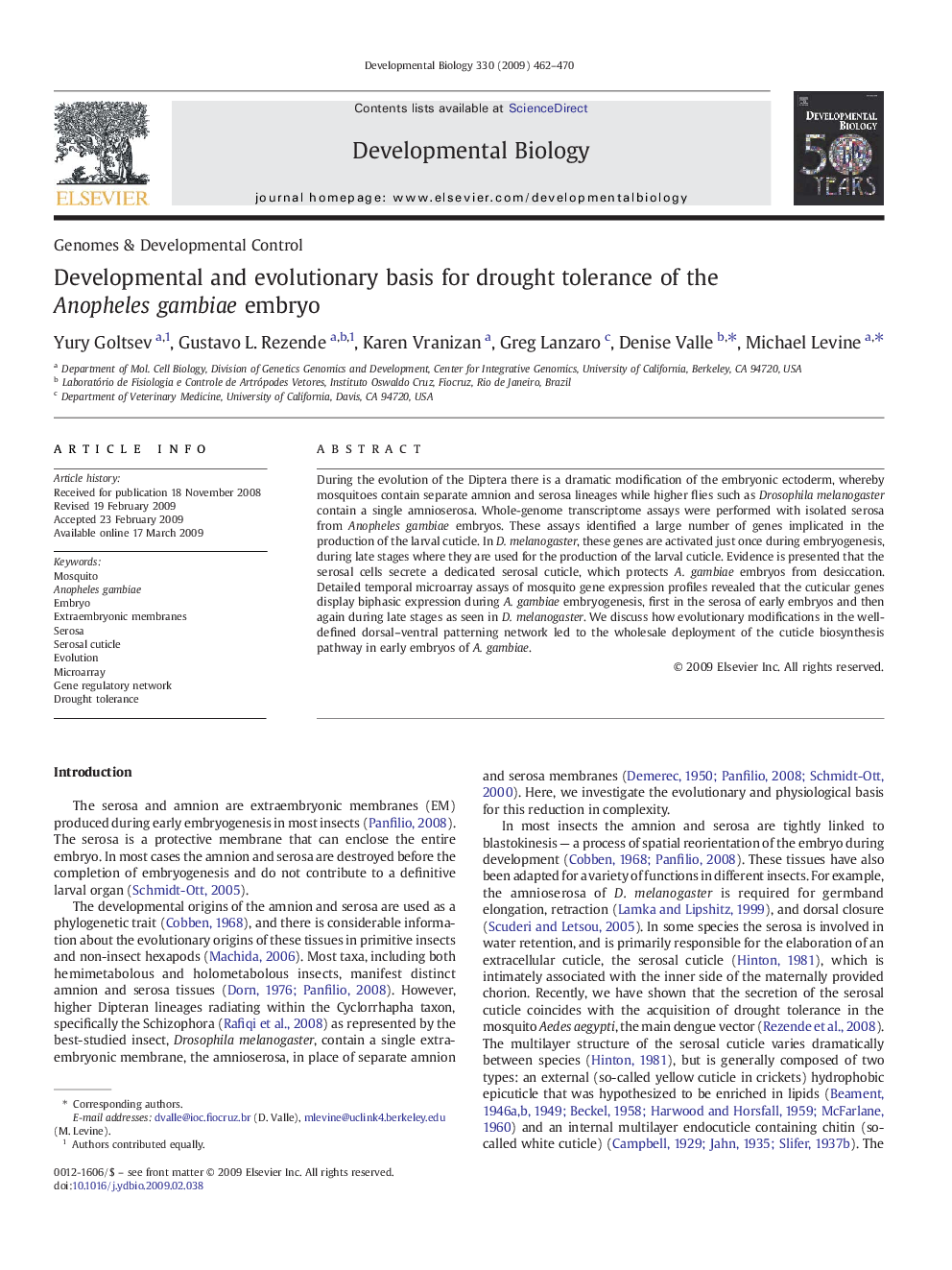| Article ID | Journal | Published Year | Pages | File Type |
|---|---|---|---|---|
| 2174151 | Developmental Biology | 2009 | 9 Pages |
During the evolution of the Diptera there is a dramatic modification of the embryonic ectoderm, whereby mosquitoes contain separate amnion and serosa lineages while higher flies such as Drosophila melanogaster contain a single amnioserosa. Whole-genome transcriptome assays were performed with isolated serosa from Anopheles gambiae embryos. These assays identified a large number of genes implicated in the production of the larval cuticle. In D. melanogaster, these genes are activated just once during embryogenesis, during late stages where they are used for the production of the larval cuticle. Evidence is presented that the serosal cells secrete a dedicated serosal cuticle, which protects A. gambiae embryos from desiccation. Detailed temporal microarray assays of mosquito gene expression profiles revealed that the cuticular genes display biphasic expression during A. gambiae embryogenesis, first in the serosa of early embryos and then again during late stages as seen in D. melanogaster. We discuss how evolutionary modifications in the well-defined dorsal–ventral patterning network led to the wholesale deployment of the cuticle biosynthesis pathway in early embryos of A. gambiae.
